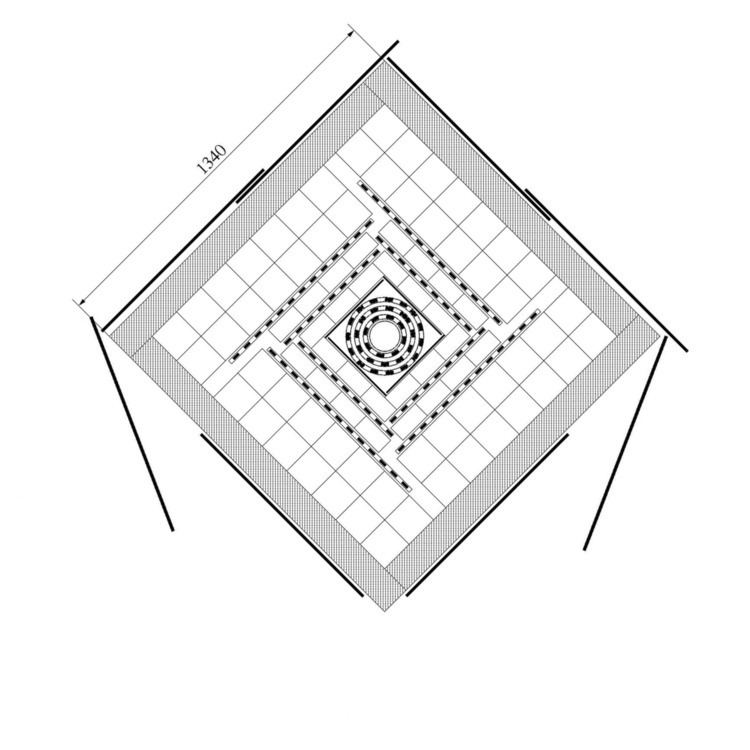Neutral Detector (ND) is a detector for particle physics experiments created by the team of physicists in the Budker Institute of Nuclear Physics, Novosibirsk, Russia. Experiments with the ND were conducted from 1982 to 1987 at the e+e− storage ring VEPP-2M in the energy range 2E=0.5-1.4 GeV.
At the beginning of 80s the leading cross sections of the electron-positron annihilation in the final states with charged particles were measured in the energy range 2E=0.5-1.4 GeV. Processes with the neutral particles in the final state were less studied. To investigate the radiative decays of the ρ 0 , ω , and ϕ mesons and other processes involving photons, π 0 , and η mesons the ND was constructed. Its distinguishing features are defined by the specially designed electromagnetic calorimeter based on NaI(Tl) scintillation counters.
List of published analyses
Radiative decays e + e − → ρ , ω , ϕ → π 0 γ , η γ ϕ → η ′ γ Rare decays of the ρ 0 , ω , and ϕ mesons ω , ϕ → π 0 e + e − ϕ → π + π − Search for rare decays ρ → π + π − π 0 ω , ϕ → π 0 π 0 γ ϕ → π 0 η γ light scalars
a 0 ( 980 ) and
f 0 ( 975 ) in
ϕ -meson radiative decays
Non-resonant electron-positron annihilation into hadrons e + e − → ω π 0 e + e − → π + π − π 0 , π + π − η e + e − → π + π − π + π − , π + π − π 0 π 0 Test of QED processes e + e − → γ γ γ γ e + e − → e + e − γ γ e + e − → e + e − e + e − e + e − → e + e − γ (virtual Compton scattering)
Analyses of other processesMeasurement of the ω-meson parameters Upper limits on electron width of scalar and tensor mesons f 0 ( 975 ) , f 2 ( 1270 ) , f 0 ( 1300 ) , a 0 ( 980 ) , and a 2 ( 1320 ) ϕ → π + π − π 0 , K S 0 K L 0 Search for e + e − → π 0 π 0 γ K S 0 → γ γ e + e − → C ( 1480 ) → ϕ π 0 Based on goals of the physics program the ND consist of
Electromagnetic calorimeter
168 rectangular NaI(Tl) scintillation counterstotal mass of NaI(Tl) is 2.6 tsolid angle coverage is 65% of 4π srminimum thickness is 32 cm or 12 radiation lengthenergy resolution for photons is σ/E = 4% / √ECharged particle coordinate system
3 layers of coaxial cylindrical 2-d wire proportional chambers in the center of the detectorsolid angle coverage is 80% of 4π srangular resolution is 0.5° in the azimuthal and 1.5° in the polar directionsurrounded by the 5-mm thick plastic scintillation counter for triggerFlat (shower) coordinate 2-d wire proportional chambers
2 layers of flat 2-d wire proportional chambers.angular resolution is 2° in the azimuthal and 3.5° in the polar direction for 0.5 GeV photonsIron absorber & anti-coincidence counters
The electromagnetic calorimeter is covered by the 10-cm thick iron absorber and plastic scintillation anti-coincidence counters.Data collected with the ND experiment corresponds to the integrated luminosity 19 pb−1. Results of the experiments with ND are presented in Ref., and are included in the PDG Review.

